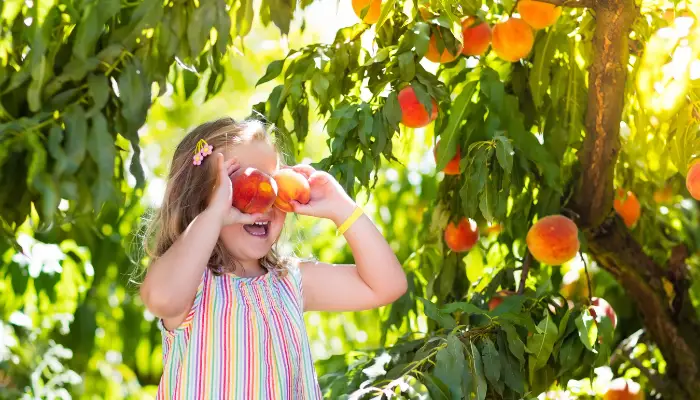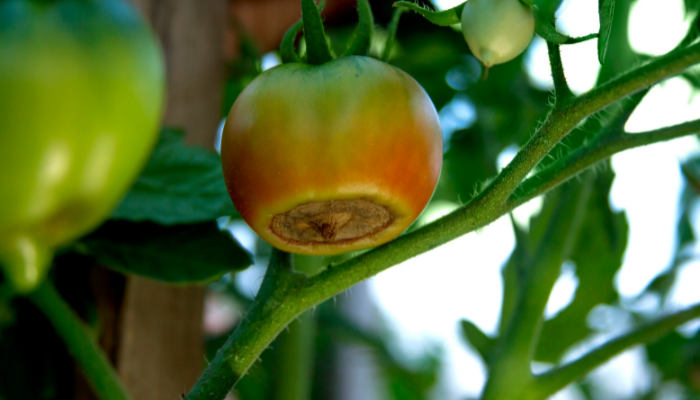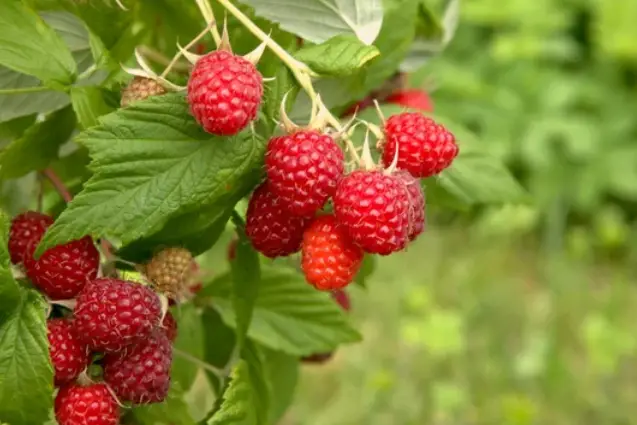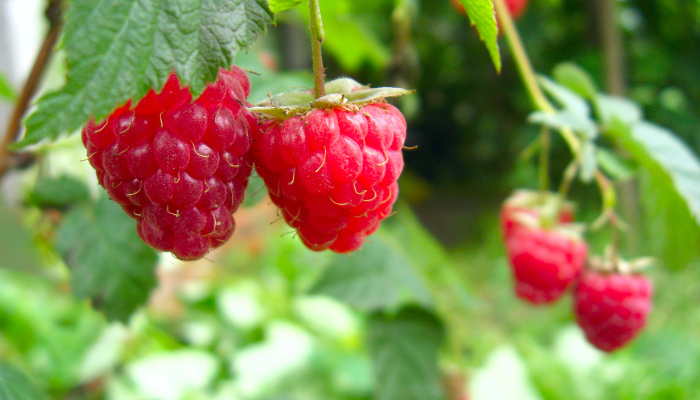The Benefits of Planting Fruit Trees in Autumn: Less Stress, More Fruit
If you are thinking of adding some fruit trees to your garden, autumn is a great time to do it. Planting fruit trees in autumn has many advantages over spring planting, such as less stress for the trees, less watering, and more time for root establishment. In this blog post, I will share some tips on how to plant fruit trees in autumn and what to consider before you start.
Choose the Right Fruit Trees for Your Climate and Soil
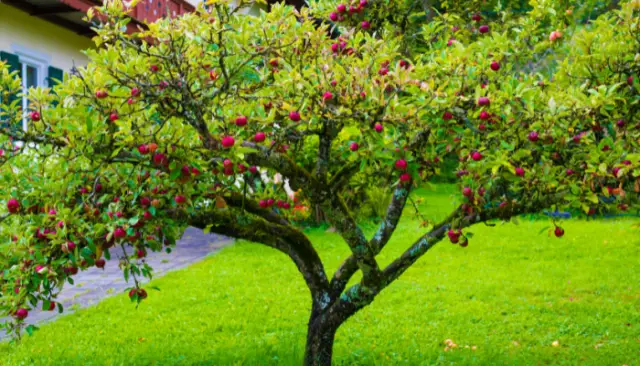
Not all fruit trees are suitable for every climate and soil type. Some fruit trees need a lot of chill hours (the number of hours below 7°C or 45°F) to produce fruit, while others need a mild winter and a long growing season. Some fruit trees prefer acidic soil, while others prefer alkaline soil. Some fruit trees are self-pollinating, while others need cross-pollination from another variety of the same species.
Before you buy any fruit trees, do some research on what kinds of fruit trees grow well in your area and what their specific requirements are. You can also visit a local nursery or a fruit tree specialist and ask for their advice. Some of the most popular fruit trees for home gardens are apples, pears, plums, cherries, peaches, apricots, figs, and citrus.
Prepare the Planting Site and the Trees
Once you have chosen your fruit trees, you need to prepare the planting site and the trees. The planting site should be sunny, well-drained, and protected from strong winds. Avoid planting fruit trees near buildings, power lines, or other trees that might shade or compete with them. The planting site should also have enough space for the mature size of the tree, which can vary depending on the rootstock and the pruning method.
The best time to plant fruit trees in the autumn is between late September and early November, depending on your climate. You want to plant the trees before the ground freezes, but after the trees have dropped their leaves and entered dormancy. This way, the trees can focus on developing their roots without having to support their foliage.
To prepare the trees for planting, you need to soak their roots in water for a few hours or overnight. This will help them hydrate and recover from any transplant shock. You also need to prune any damaged, diseased, or crossing branches and shorten the main stem to about 1 meter (3 feet) high. This will encourage the formation of lateral branches and a balanced shape.
Dig the Planting Hole and Plant the Tree
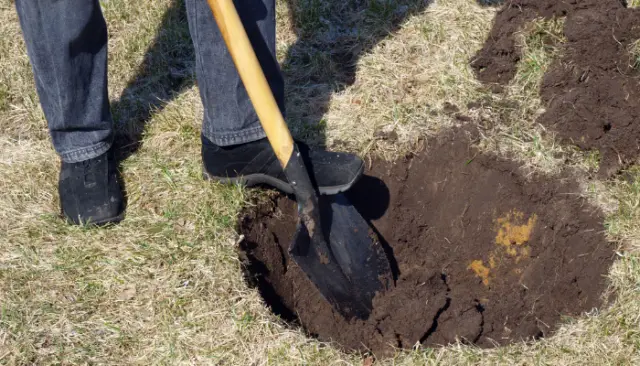
To dig the planting hole, you need to make it twice as wide and as deep as the root ball of the tree. You can use a spade or a shovel to dig the hole, and a measuring tape or a stick to check the depth and width. You also need to loosen the soil at the bottom and sides of the hole to improve drainage and aeration.
To plant the tree, you need to place it in the center of the hole and spread its roots evenly. You can use a stake or a level to check that the tree is straight and that the graft union (the point where the rootstock and the scion are joined) is above the soil line. You also need to fill the hole with the same soil that you removed and gently tamp it down to eliminate any air pockets. You can also add some organic matter, such as compost or manure, to enrich the soil and help the tree grow.
After planting the tree, you need to water it thoroughly and apply a layer of mulch, such as wood chips or straw, around the base of the tree. This will help retain moisture, prevent weeds, and protect the roots from temperature extremes. You also need to tie the tree to the stake with a soft material, such as a cloth or a rubber band, to provide support and stability.
Care for Your Fruit Trees in Autumn and Beyond
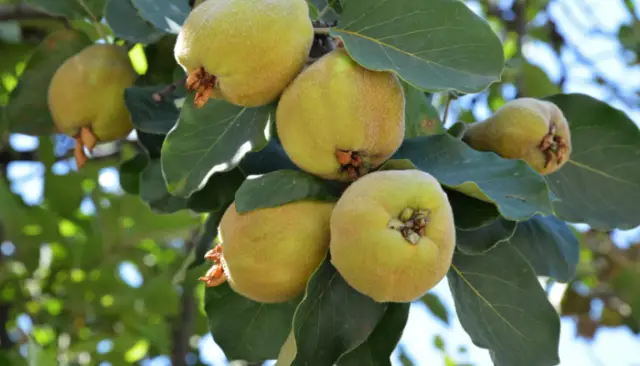
Planting fruit trees in the autumn is not the end of the story. You also need to care for your fruit trees in autumn and beyond to ensure their health and productivity. Some of the things you need to do are:
- Water your fruit trees regularly until the ground freezes, and then again in spring when the buds start to swell. You can use a hose, a sprinkler, or a drip irrigation system to water your fruit trees, and a moisture meter or your finger to check the soil moisture. You want to keep the soil moist but not soggy, and you want to avoid overwatering or underwatering your fruit trees.
- Fertilize your fruit trees in spring, after the last frost, and again in summer, after the fruit sets. You can use a balanced, organic fertilizer, such as a 10-10-10 or a 5-5-5, and follow the instructions on the label. You want to apply the fertilizer around the drip line of the tree, which is the area where the branches end, and avoid touching the trunk or the roots. You also want to water the fertilizer well and avoid overfertilizing or underfertilizing your fruit trees.
- Prune your fruit trees in late winter or early spring, before the buds break, and again in summer, after the fruit sets. You can use a sharp, clean pair of pruning shears, a saw, or a lopper to prune your fruit trees, and a disinfectant, such as alcohol or bleach, to sanitize your tools. You want to remove any dead, diseased, damaged, or crossing branches, and thin out any crowded or weak branches. You also want to shape your fruit trees according to their desired form, such as a central leader, an open center, or an espalier. You also want to avoid overpruning or underpruning your fruit trees.
- Protect your fruit trees from pests and diseases, such as insects, fungi, bacteria, or viruses. You can use a variety of methods, such as cultural, mechanical, biological, or chemical, to protect your fruit trees and a magnifying glass, a microscope, or a diagnostic kit to identify the problem. You want to monitor your fruit trees regularly and act promptly if you notice any signs of trouble. You also want to follow the integrated pest management (IPM) principles, which are to prevent, identify, monitor, and control pests and diseases, and use the least toxic and most effective methods available. You also want to avoid overusing or misusing any pesticides or fungicides and follow the safety precautions and the label instructions.
- Harvest your fruit trees when the fruit is ripe, which can vary depending on the type, variety, and climate of the fruit tree. You can use a pair of scissors, a knife, or your hand to harvest your fruit trees, and a basket, a bucket, or a bag to collect the fruit. You want to pick the fruit gently and carefully and avoid bruising, damaging, or dropping the fruit. You also want to store the fruit properly, either in a cool, dry, dark place or in a refrigerator, freezer, or canner. You also want to enjoy the fruit fresh, cooked, or preserved, and share it with your family and friends.
Conclusion
Planting fruit trees in the autumn is a rewarding and enjoyable activity that can provide you with delicious and nutritious fruit for years to come. By following these tips on how to plant fruit trees in autumn and what to consider before you start, you can ensure the success of your fruit tree project and have fun along the way.
Frequently Asked Questions on Planting Fruit Trees in Autumn
Why is autumn a good time to plant fruit trees?
Autumn is a good time to plant fruit trees because they have all winter to settle into their new home before the growth of spring. Trees planted in autumn will need less watering the following summer and will establish a healthy root system more quickly.
What kind of fruit trees can I plant in the autumn?
You can plant a variety of fruit trees in autumn, depending on your climate and soil type. Some of the most popular fruit trees for home gardens are apples, pears, plums, cherries, peaches, apricots, figs, and citrus. However, you should always check the hardiness and tolerance of the trees you choose and consult with a local expert before planting.
How do I prepare the planting site and the trees for planting in the autumn?
To prepare the planting site and the trees for planting in autumn, you need to do the following steps:
-
- Choose a sunny, well-drained, and protected spot for your trees, with enough space for their mature size.
- Soak the roots of your trees in water for a few hours or overnight before planting.
- Prune any damaged, diseased, or crossing branches, and shorten the main stem to about 1 meter (3 feet) high.
- Dig a planting hole twice as wide and as deep as the root ball of the tree, and loosen the soil at the bottom and the sides of the hole.
- Place the tree in the center of the hole and spread its roots evenly, making sure the graft union is above the soil line.
- Fill the hole with the same soil that you removed, and gently tamp it down to eliminate any air pockets. You can also add some organic matter, such as compost or manure, to enrich the soil.
- Water the tree thoroughly, and apply a layer of mulch, such as wood chips or straw, around the base of the tree.
- Tie the tree to a stake with a soft material, such as a cloth or a rubber band, to provide support and stability.
How do I care for my fruit trees in autumn and beyond?
To care for your fruit trees in autumn and beyond, you need to do the following things:.
-
- Water your fruit trees regularly until the ground freezes, and then again in spring when the buds start to swell. Keep the soil moist but not soggy, and avoid overwatering or underwatering your trees.
- Fertilize your fruit trees in spring, after the last frost, and again in summer, after the fruit sets. Use a balanced, organic fertilizer and follow the instructions on the label. Apply the fertilizer around the drip line of the tree, and avoid touching the trunk or the roots. Water the fertilizer well, and avoid overfertilizing or underfertilizing your trees.
- Prune your fruit trees in late winter or early spring, before the buds break, and again in summer, after the fruit sets. Use a sharp, clean pair of pruning shears, a saw, or a lopper to prune your trees, and a disinfectant, such as alcohol or bleach, to sanitize your tools. Remove any dead, diseased, damaged, or crossing branches, and thin out any crowded or weak branches. Shape your fruit trees according to your desired form, such as a central leader, an open center, or an espalier. Avoid overpruning or underpruning your trees.
- Protect your fruit trees from pests and diseases, such as insects, fungi, bacteria, or viruses. Use a variety of methods, such as cultural, mechanical, biological, or chemical, to protect your trees, and a magnifying glass, a microscope, or a diagnostic kit to identify the problem. Monitor your fruit trees regularly, and act promptly if you notice any signs of trouble. Follow the integrated pest management (IPM) principles, which are to prevent, identify, monitor, and control the pests and diseases, and use the least toxic and most effective methods available. Avoid overusing or misusing any pesticides or fungicides, and follow the safety precautions and the label instructions.
- Harvest your fruit trees when the fruit is ripe, which can vary depending on the type, variety, and climate of the fruit tree. Use a pair of scissors, a knife, or your hand to harvest your trees, and a basket, a bucket, or a bag to collect the fruit. Pick the fruit gently and carefully, and avoid bruising, damaging, or dropping the fruit. Store the fruit properly, either in a cool, dry, dark place or in a refrigerator, a freezer, or a canner. Enjoy the fruit fresh, cooked, or preserved, and share it with your family and friends.
What are the benefits of planting fruit trees in the autumn?
Planting fruit trees in autumn has many benefits, such as:
-
- There is less stress for the trees, as they are not competing with fruit production, transpiration, and heat.
- There is less watering for the gardener as the soil is moist and the evaporation is low.
- More time for root establishment, as the trees can focus on developing their roots without having to support their foliage.
- Better adaptation to the soil and the climate, as the trees can acclimate to their new environment before the growth of spring.
- Higher survival rate, as the trees are less likely to die from starvation, dehydration, or frost damage.
- Earlier and more abundant fruiting, as the trees are more vigorous and healthy.

